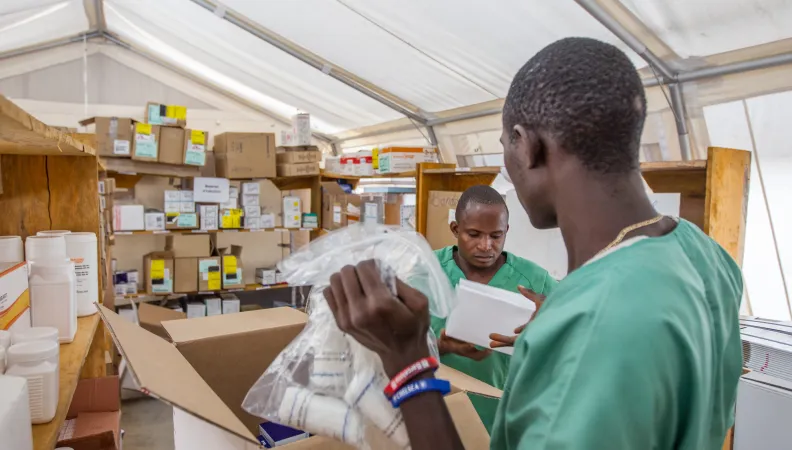Share the page
The private sector and pharmaceutical industry in Africa
Published on
Marie-Paule Kieny Former Assistant Director-General

Private Sector & Development #28 - Improving the quality and accessibility of african medicine
Providing access to quality medicines still poses a number of challenges in Africa. This 28th issue of Private Sector & Development magazine tackles attempts to come up with a few pointers and solutions for the future.
Providing access to quality medicines still poses a number of challenges in Africa. Distribution channels are often fragmented, with a large number of intermediaries or parallel channels, which often fuel counterfeiting – a real public health issue.
For example, it is estimated that some 60% of medicines bought in the Gulf of Guinea are classified as “SF” (substandard and falsified) by the World Health Organization (WHO). Furthermore, the problem does not only affect Africa as 10% of all the medicines in circulation around the world could be “SF”.
As for local production, it is still struggling to find a niche in an African pharmaceutical market which is 70% sourced from foreign imports. It is also marked by difficulties to access raw materials, especially active ingredients, and major logistical constraints (maintaining a continuous cold chain, complexity of customs clearance procedures, uncertain delivery times, etc.). For example, in Sub-Saharan Africa, apart from in South Africa and Tanzania, it is difficult or even impossible to find active ingredient production units. Other barriers to the development of private players in the drugs economy on the Continent include access to financing, the implementation of effective industrial tools, the lack of regulatory harmonization between countries and the availability of highly qualified personnel.
Yet the increasing incidence of chronic diseases (cancer, diabetes, lung infections, heart disease, etc.), the demographic transitions underway, the increasing number of generic drugs produced, the promise of universal coverage and the emergence of middle classes with a purchasing power that they are partly willing to dedicate to their health, are all factors which increase demand for medicines in Africa. Indeed, according to estimates, projected expenditure on pharmaceutical products is expected to reach between USD 40bn and USD 45bn a year in Africa by 2020, against USD 14.5bn in 2010.
Synergies between public and private players are essential in addressing the expected development of the pharmaceutical industry sector in Africa in the coming years. As State budget resources are already low, private or non-profit players are being increasingly called upon by public authorities as an alternative to sometimes deficient drug supply and distribution systems.
Four main criteria can be used to define the issues of access to medicines in Africa, which it is essential for players from both the public and private sectors to provide a response to: making medicines available that are consistent with the needs of populations and in sufficient quantity; making prices affordable for patients and health systems; ensuring a satisfactory level of quality, safety and effectiveness and, finally, improving the efficiency of drug distribution networks.
Find out the articles of this issue

